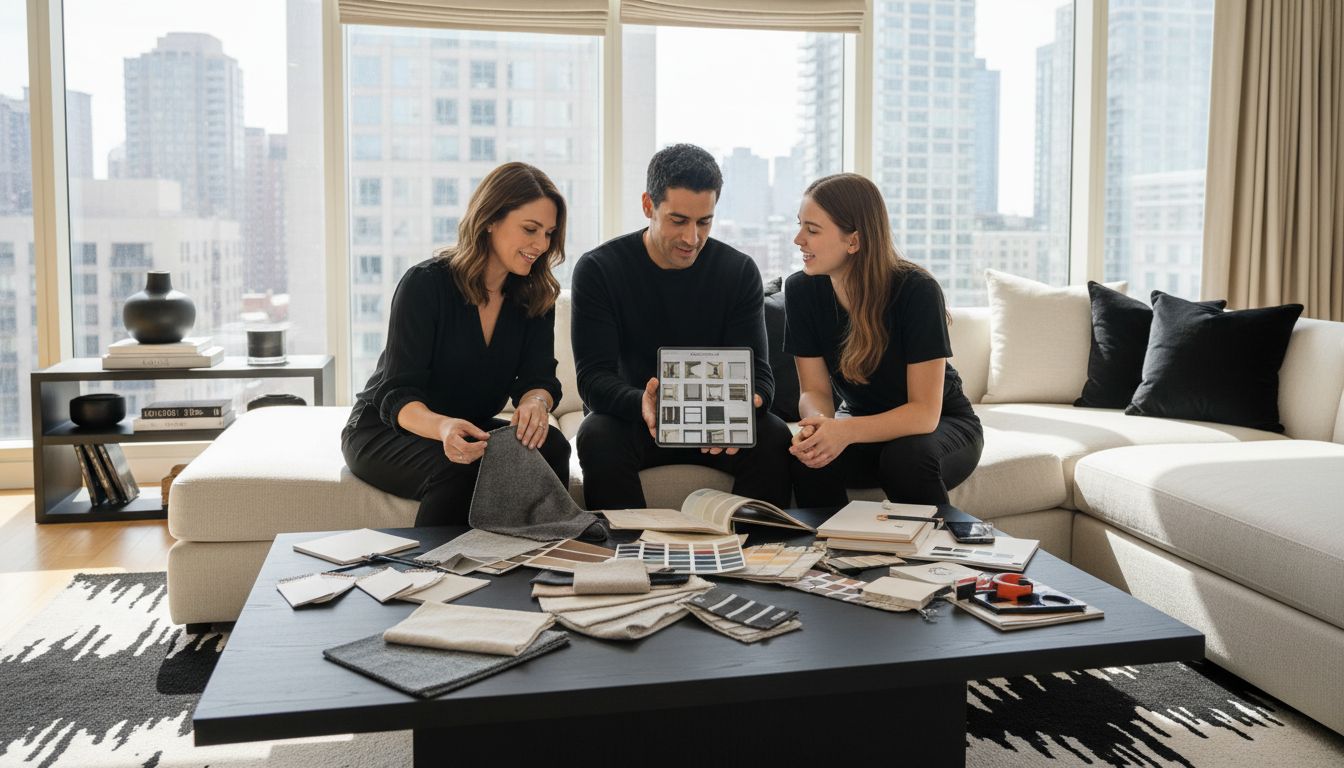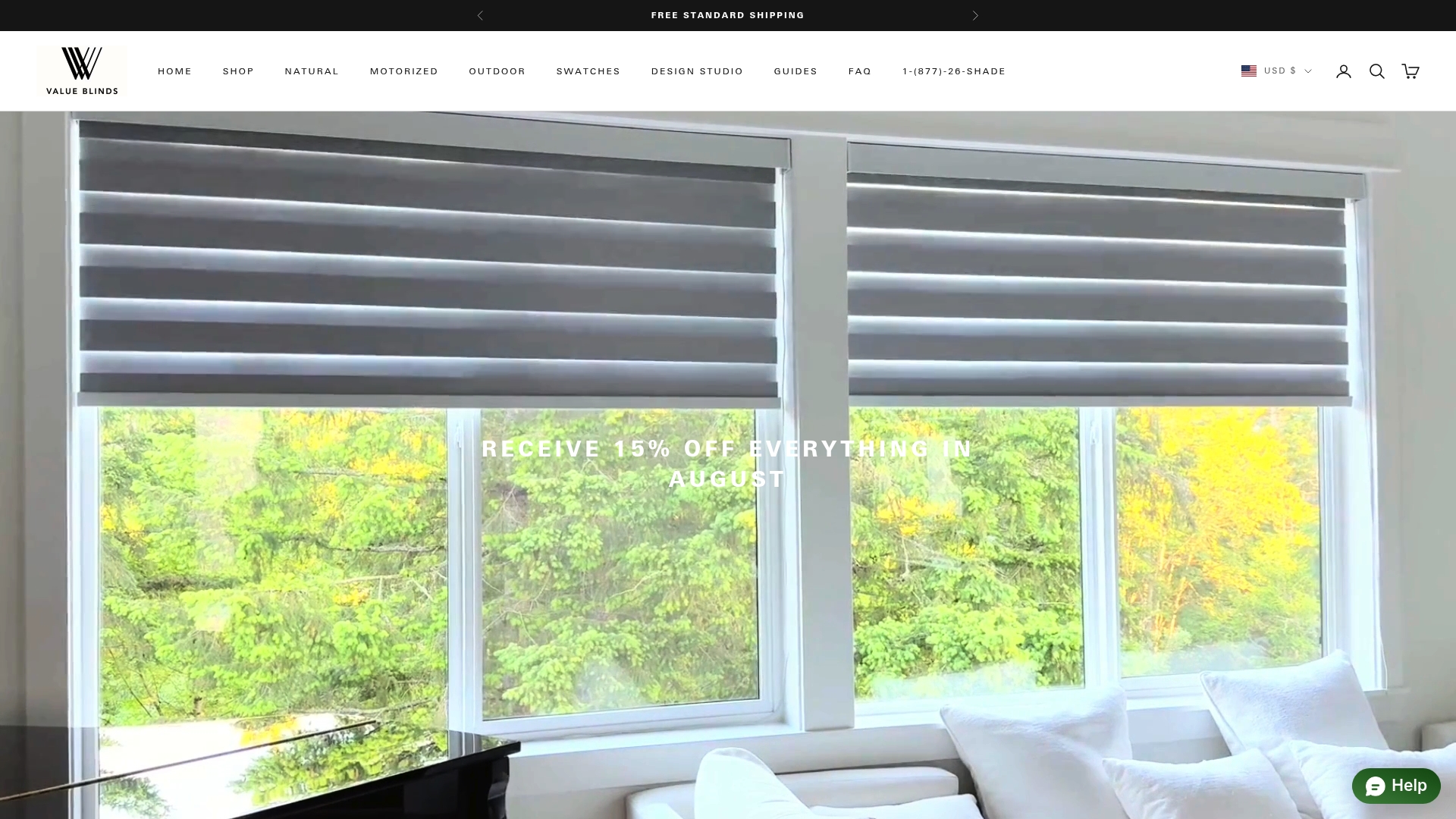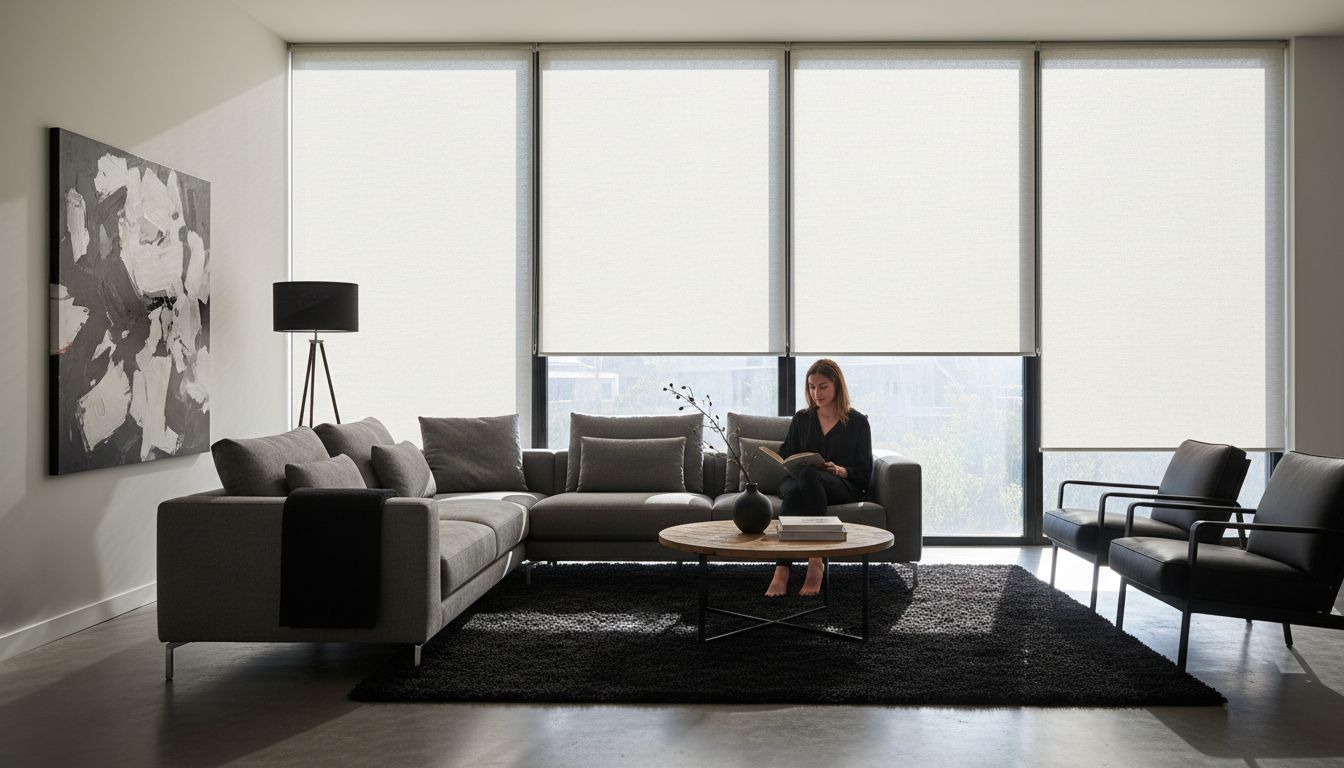
7 Simple Steps to Choose Colors for Custom Window Treatments
Color can transform a room in ways that few other design choices can. In fact, studies show that the right shade on your window treatments can shift the mood and even boost comfort and productivity at home. With so many colors and styles to consider, finding a match that complements the purpose and daylight of each room becomes a real challenge. This guide helps you find window treatment colors that reflect your style while supporting the unique character of every space in your home.
Table of Contents
- 1. Understand The Room’s Purpose And Mood
- 2. Assess Natural And Artificial Lighting Effects
- 3. Match Colors To Existing Decor And Furniture
- 4. Use Color Swatches And Samples Effectively
- 5. Balance Neutrals And Accent Colors Smartly
- 6. Consider Season And Trends Without Overcommitting
- 7. Test Color Choices Before Finalizing Orders
Quick Summary
| Takeaway | Explanation |
|---|---|
| 1. Understand room purpose for color choice | Tailor your window treatment colors to each room’s specific function and desired emotional response. |
| 2. Assess lighting effects on colors | Test how colors look in different lighting to ensure they appear as intended throughout the day. |
| 3. Match colors to existing decor | Harmonize window treatment colors with your furniture and decor for a cohesive look. |
| 4. Use swatches to visualize choices | Test color swatches in your space to see how they interact with lighting and existing elements. |
| 5. Balance neutrals with accent colors | Use neutral tones as a base and introduce accent colors for visual interest without overwhelming the space. |
1. Understand the Room’s Purpose and Mood
Choosing window treatment colors begins with deeply understanding the specific purpose and emotional atmosphere of each room. Your color selection isn’t just about aesthetics it’s about creating an intentional environment that supports the room’s primary function and desired emotional response.
Each room in your home serves a unique purpose and requires a tailored color approach. A home office demands different window treatment colors compared to a bedroom or living room. Think of colors as emotional architects that shape how you experience a space. Soft blues and greens can create a calming atmosphere in bedrooms, while warm neutrals might enhance productivity in work areas.
Consider the room’s primary activities when selecting colors. Functional color selection involves understanding how light, mood, and purpose intersect. For instance:
- Bedrooms need colors that promote relaxation and restfulness
- Home offices benefit from colors that stimulate focus and energy
- Living rooms work best with versatile colors that support multiple activities
- Kitchens often thrive with colors that feel clean and energetic
Visual comfort matters as much as physical comfort. Dark rooms might require lighter window treatment colors to brighten the space, while sun-drenched rooms can handle deeper, richer tones. Pay attention to natural light patterns and how colors interact with sunlight throughout the day.
For additional insights on selecting window treatments for specific rooms, check out our guide on window treatments for small rooms. This resource will help you refine your approach to room-specific color selection and enhance your home’s overall aesthetic harmony.
2. Assess Natural and Artificial Lighting Effects
Lighting transforms how colors appear in your living spaces, making it a critical factor when selecting window treatment colors. Understanding how different light sources interact with colors can dramatically impact the aesthetic and emotional experience of a room.
According to research from the National Institute of Standards and Technology, human color perception varies significantly based on lighting conditions. Natural sunlight and artificial lighting can make identical colors look completely different, which means your window treatment color might appear dramatically different throughout the day.
Key Lighting Assessment Strategies:
- Observe your room at different times of day (morning, noon, evening)
- Note how sunlight enters and moves across the space
- Test color samples under multiple lighting conditions
- Consider both natural daylight and your room’s artificial lighting sources
Artificial lighting plays an equally crucial role. Incandescent lights create warm tones that can make colors appear more yellow or orange, while LED and fluorescent lights can introduce cooler blue undertones. This means a soft gray window treatment might look completely different under various light sources.
For comprehensive insights into how light interacts with colors, explore our guide on how light affects color. Understanding these nuanced interactions will help you make more informed window treatment color choices that look stunning in every light.
3. Match Colors to Existing Decor and Furniture
Selecting window treatment colors that harmonize with your existing furniture and decor is an art form that transforms spaces from disconnected to intentionally designed. Your window treatments are not standalone elements but integral components of your room’s visual symphony.
According to color theory research in interior design, creating a cohesive color palette requires understanding the underlying relationships between existing furnishings and potential window treatment colors. This approach goes beyond simple matching it involves creating visual dialogue and balance within your living space.
Color Matching Strategies:
- Pull accent colors from existing furniture pieces
- Use neutral window treatments to complement bold furniture
- Consider undertones of wood finishes and metal accents
- Create visual unity through complementary or analogous color schemes
Imagine your leather sofa has warm caramel undertones. In this scenario, window treatments in soft beige or muted gold would create a seamless connection. Alternatively, if your room features cool gray furniture, window treatments in soft slate or silvery blue can enhance the existing palette.
For those seeking deeper insights into crafting the perfect color palette, our guide on choosing a color palette for custom window treatments offers expert recommendations to elevate your interior design approach.
4. Use Color Swatches and Samples Effectively
Color swatches are your secret weapon in selecting the perfect window treatment colors. These small samples can prevent costly mistakes and help you visualize how colors will actually look in your unique space.
Research in interior design emphasizes the critical importance of testing colors under real world conditions. Effective swatch evaluation involves more than just holding a small color sample it requires strategic assessment across different environments and lighting scenarios.
Smart Swatch Testing Techniques:
- Request multiple color samples for comparison
- Test swatches against existing furniture and wall colors
- Observe samples at different times of day
- View samples in natural and artificial light
- Place samples in various locations within the room
Professional designers recommend viewing color swatches in context. This means placing your window treatment color samples next to curtains, furniture, and walls to understand how they interact. Some colors might look perfect in isolation but clash dramatically when placed alongside other elements.
A crucial testing strategy involves examining how colors transform under different lighting conditions. A swatch that appears soft gray in morning light might look completely different under evening lamp illumination. Take time to observe these subtle shifts before making your final selection.
For additional guidance on selecting the perfect color palette, explore our guide on choosing a color palette for custom window treatments. This resource will help you navigate the nuanced world of color selection with confidence and precision.
5. Balance Neutrals and Accent Colors Smartly
Mastering the art of balancing neutral and accent colors in window treatments is like conducting a visual symphony. Your goal is to create harmony without letting any single color dominate the entire composition.
According to interior design research, neutral colors are the foundation of any sophisticated color scheme, while accent colors add personality and visual interest. Think of neutrals as the supporting actors and accent colors as the scene stealers that bring dramatic flair to your room.
Strategic Color Balance Techniques:
- Use neutral window treatments as a foundational element
- Select 1-2 accent colors that complement your existing decor
- Apply the 60-30-10 color rule (60% neutral base, 30% secondary color, 10% accent)
- Consider texture as another way to add visual depth
- Choose accent colors that appear in other room elements
For window treatments, this might mean selecting a soft taupe or warm gray as your primary color and introducing a bold emerald green or deep navy blue as an accent. The neutral tone provides stability while the accent color creates energy and focal points.
Remember that accent colors do not need to be loud or overwhelming. Subtle touches like a thin border, delicate embroidery, or carefully chosen trim can introduce just enough color to make your window treatments feel intentional and design forward.
For additional insights into crafting the perfect color palette, explore our guide on choosing a color palette for custom window treatments. This resource will help you navigate the nuanced world of color selection with confidence and precision.
6. Consider Season and Trends Without Overcommitting
Navigating color trends for window treatments requires a delicate balance between staying current and maintaining timeless design. Your goal is to create a flexible approach that allows for seasonal inspiration without making permanent design commitments that might feel dated in a few years.
Design research suggests creating a versatile color foundation that can be easily updated with trend-inspired accents. This strategy prevents your window treatments from looking outdated while still allowing you to play with contemporary color palettes.
Smart Trend Integration Strategies:
- Select neutral base colors for primary window treatments
- Use removable accessories to introduce trendy colors
- Consider reversible or layered window treatments
- Rotate accent elements like trims or valances
- Invest in classic styles with subtle color variations
For example, if sage green is trending this season, instead of replacing entire window treatments, you might add sage green throw pillows or a matching trim. This approach lets you experiment with current colors without making expensive long term commitments.
Think of your window treatments like a classic wardrobe piece. A well tailored neutral blind or shade serves as your timeless foundation. Trendy colors become interchangeable accessories that can be swapped out as styles evolve.
For additional guidance on creating adaptable design choices, explore our custom window treatments guide. This resource will help you make strategic design decisions that remain stylish year after year.
7. Test Color Choices Before Finalizing Orders
The final step in selecting window treatment colors is perhaps the most critical testing your choices before making a permanent commitment. Rushing into a purchase without thorough evaluation can lead to expensive design mistakes that are challenging and costly to correct.
Research in interior design emphasizes the importance of comprehensive color testing in the actual environment where window treatments will be installed. Colors can dramatically transform based on lighting, surrounding decor, and room characteristics.
Comprehensive Color Testing Techniques:
- Request physical color samples and swatches
- Observe samples at different times of day
- Compare colors against existing furniture and wall colors
- Use natural and artificial lighting for comprehensive evaluation
- Take photographs to compare color variations
Professional designers recommend creating a comprehensive testing process. This means placing your color samples in multiple locations within the room and observing how they interact with different light sources. A color that looks perfect in morning sunlight might appear completely different under evening lamp illumination.
Consider creating a visual mockup using digital design tools or photographing potential color combinations. Some window treatment providers offer virtual visualization services that can help you preview colors in your specific space before making a final decision.
For additional guidance on making confident color selections, explore our premium motorized shades collection where you can experiment with various color options and design configurations.
Below is a comprehensive table summarizing the strategies for selecting window treatment colors discussed throughout the article.
| Strategy/Consideration | Key Actions & Insights | Benefits/Outcomes |
|---|---|---|
| Understand Room’s Purpose | Tailor color to room’s function and mood. For instance, use calming colors in bedrooms and productive tones in home offices. | Enhances the room’s primary purpose and emotional atmosphere. |
| Assess Lighting Effects | Observe room at different times with natural and artificial light; use multiple light sources for testing colors. | Ensures colors look appealing under various lighting conditions. |
| Match with Decor | Use existing furniture colors as a guide. Create cohesive palettes through complementary or analogous schemes. | Creates visual harmony and intentional design. |
| Test Swatches | Request samples, test in different locations and lighting; compare with existing decor. | Avoids costly design mistakes by ensuring color compatibility. |
| Balance Neutrals & Accents | Apply the 60-30-10 rule: 60% neutral, 30% secondary color, 10% accent. Use subtle accents. | Provides stability while enhancing interest and energy. |
| Consider Seasons & Trends | Use neutral bases and update with trendy accessories; reversible treatments offer flexibility. | Maintains timeless design while allowing for easy updates. |
| Test Before Finalizing | Conduct comprehensive testing with swatches and digital mockups. Use lighting variation. | Guarantees satisfaction with final choices in all conditions. |
Unlock Perfect Color Harmony for Your Custom Window Treatments
Choosing the right colors for your window treatments can feel overwhelming when you want your space to reflect a specific mood and style while complementing existing decor. This article guides you through understanding your room’s purpose, assessing lighting effects, and balancing neutrals with accent colors so your choices feel intentional and timeless. Now you can turn these insights into reality with ease.
Discover our wide selection of customizable options like Solid Wood Blinds that bring natural warmth to any room or explore versatile Zebra Shades - Versatile Light Control and Elegant Privacy Solutions to fine-tune your light and privacy preferences.

Start your design journey today at Value Blinds and order free swatches to see how colors look in your unique lighting before you buy. Experience expert support and tools that help you confidently create custom window treatments that perfectly match your vision. Don’t wait to transform your home with color choices you will love for years to come.
Frequently Asked Questions
How do I choose the right colors for custom window treatments in different rooms?
To select colors for window treatments, first consider the purpose and mood of each room. For example, use calming hues like soft blues in bedrooms and stimulating colors like warm neutrals in home offices. Start by mapping out the main activities in each space to guide your color choices.
What role does natural and artificial lighting play in color selection for window treatments?
Lighting significantly affects how colors appear in your space. Observe your room at various times of the day and test color samples under both natural and artificial light to see how they change. Take at least three different lighting conditions into account for more informed decisions.
How can I ensure that my window treatment colors match my existing decor?
To create a cohesive look, select window treatment colors that harmonize with your existing furniture and decor. Pull accent colors from furniture pieces or choose neutral shades that complement bolder colors. Establish a visual dialogue by placing color samples next to your current decor to evaluate compatibility.
What are the best practices for testing color swatches before finalizing my order?
Test your color swatches effectively by observing them in the actual room where they will be installed. Compare different samples at various times of day and under all available lighting to see how they interact with your environment. Aim to spend at least a week evaluating these swatches before making any commitments.
How do I balance neutral and accent colors in my window treatment choices?
Create balance by establishing a neutral base color for your window treatments, then introduce 1-2 accent colors for visual interest. Follow the 60-30-10 rule, where 60% of your design features neutral colors, 30% has secondary tones, and 10% consists of impactful accent hues. This creates a harmonious composition without overwhelming the space.
How can I incorporate seasonal trends into my color choices for window treatments?
Select timeless neutral colors for your primary window treatments and introduce seasonal trends through removable accessories or accent colors. This allows you to stay current while maintaining a versatile design. For example, accessorize with trendy cushions or trims that can be easily swapped out as styles change.







